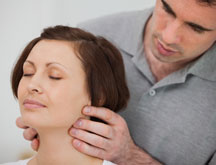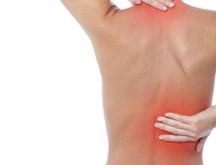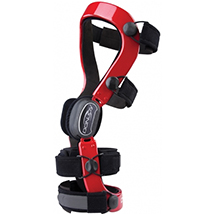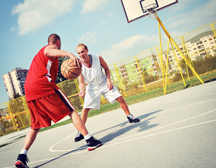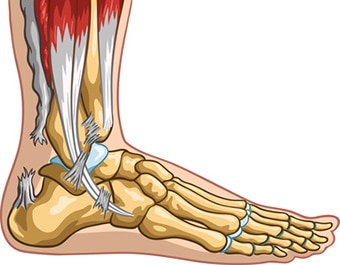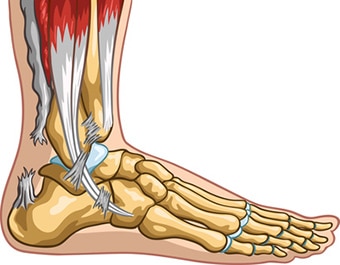What is arthritis?
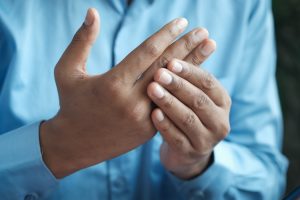
The medical and rehabilitation world uses the term ‘arthritis’ all the time. However, what exactly does it mean to have this condition? Simply put, arthritis refers to painful joints or joint disease. However, this is a very simplistic definition of the term. More specifically, there are over 100 different types of this condition. Arthritis affects millions of people around the world, including men and women and people of all ages and ethnicities. Additionally, because it affects the joints of the body, it is a leading cause of disability and affects a lot of the most basic day to day tasks. Individuals who have severe forms of the disease have a significant loss in their quality of life.
What are some important statistics?
A good resource for information on arthritis is the Arthritis Society website. According to their website, about 6 million people across Canada have arthritis. That works out to about 1 in 5 people. The impact of this condition on a person’s life can be substantial:
- Someone with arthritis is 4 times more likely to feel that their health is not good
- Suffering with arthritis may make someone 2 times as likely to suffer from mental health concerns
- 40% of those with arthritis have pain that affects their ability to participate in activities
- Those with arthritis are 5 times more likely to struggle with their mobility
- Having arthritis may make someone two times as likely to be out of work
What are the signs and symptoms of arthritis?
The symptoms of this condition will vary depending on the specific diagnosis. However, in general they include:
- Swelling
- Pain
- Stiffness
- Decreased range of motion
Are there different categories of this condition?
There are so many different types of arthritis and arthritis-related conditions that it would be too hard to describe them all in a single blog. However, there are two main types: Degenerative and Inflammatory
Degenerative Arthritis
Another term for Degenerative Arthritis is Osteoarthritis (OA). Furthermore, according to the Arthritis Society of Canada, osteoarthritis is the most common type. Consequently, it affects more people in Canada than all the other forms of the disease combined.
- Osteoarthritis is commonly described using the term ‘wear-and-tear’
- However, the Osteoarthritis Research Society International (OARSI) more recently defined it as the body’s inability to properly repair damaged joint tissues.
- The damage to the joints can develop from changes related to aging or from injuries.
- Osteoarthritis damages the cartilage covering the joint surfaces.
- Cartilage is a tough elastic material that covers and protects the ends of bones.
- Severe damage to the cartilage leads to exposure of the boney surfaces
- This creates pain, stiffness and reduced range of motion.
- The most commonly affected joints are the knees, hips, hands and spine
What are some risk factors for osteoarthritis?
There are some factors that contribute to the development of OA including:
-
- Age
- Obesity
- Sex
- Occupation
- Participation in certain sports
- History of joint injury or surgery
- Genetics
Inflammatory Arthritis
- Inflammatory arthritis includes every other form of arthritis except osteoarthritis.
- This category of the condition is very different from osteoarthritis because the joint damage comes from the process of inflammation.
- In most cases, the inflammation is caused by an autoimmune disease, which is when the immune system mistakenly attacks the normal tissues of the body.
- More specifically for inflammatory arthritis, the immune system attacks the joint tissues.
- The inflammation can result in pain, stiffness, restricted mobility, fatigue and damage to joints and other tissues.
- Furthermore, the damage can change the shape of the joints and deformities can develop.
- Some forms of inflammatory arthritis are considered systemic because they can affect the whole body.
What are some common types of inflammatory arthritis?
-
- Rheumatoid arthritis
- Ankylosing spondylitis
- Psoriatic arthritis
- Juvenile idiopathic arthritis
- Lupus
- Gout
How is this condition diagnosed?
- The diagnosis of arthritis is made using symptom presentations and physical examinations
- Some doctors may order an X-ray to visualize the potential damage of a joint
- It is important to understand that quite often the symptoms of osteoarthritis do not always match what is shown on x-rays.
- For example, the x-ray may show significant joint changes but the symptoms may not be severe
- However, the reverse may also be true
- A medical history and physical examinations are required to diagnose inflammatory arthritis
- Unlike with osteoarthritis, inflammatory arthritis usually requires diagnostic tests such as blood tests and x-rays to confirm the diagnosis
What are the treatment options for osteoarthritis?
Unfortunately, osteoarthritis creates irreversible joint changes. However, the good news is that the symptoms can be relieved or significantly improved with several management strategies. Specifically, the main goal of any treatment is to manage pain and improve function instead of curing the condition.
Medications
-
- Medication is usually required on an as-needed basis when symptoms come and go
- For people who have more severe or constant symptoms, medications may have to be used daily to manage the symptoms, especially for inflammatory conditions
Physiotherapy
- Physiotherapy is a form of rehabilitation that helps to decrease pain, increase range of motion and improve strength and function
- The Registered Physiotherapists at PhysioNow will use a wide range of treatment techniques to help improve a patient’s condition
- More specifically, physiotherapy treatment at PhysioNow may include the following types of treatments:
- Modalities to help manage pain and inflammation
- Examples may include interferential current (IFC), ultrasound, laser and acupuncture
- Manual techniques to reduce tissue and joint stiffness
- At PhysioNow, the physiotherapists have expertise in soft tissue work, joint mobilizations and stretching techniques that will help alleviate pain and stiffness
- Exercises that will help improve flexibility and overall strength of the affected areas
- The exercises prescribed by our therapists will help our patients regain their strength and function and get back to doing the important things in life
- A lot of elderly patients with arthritis conditions may stop being active and lose their strength and overall function
- This will place them at increased risk of falling, which can cause serious injury
- The physiotherapists at PhysioNow can implement a Falls Prevention Program that will help rebuild strength, endurance and reduce the risk of falls
- Education to help the patient manage their symptoms at home and continue with their activity
- Modalities to help manage pain and inflammation
Surgery
- The most common types of surgical procedures are total joint replacements, especially for the hip and knee
- More specifically, joint replacement surgery involves removing the damaged joint and replacing it with a prosthesis.
- However, the first line of defense should always be conservative treatments such as medication and physiotherapy
- Surgery is considered when there is no response to conservative treatments
What are the treatment options for inflammatory arthritis?
- Medications are a large part of the treatment for inflammatory arthritis as well
- The medications are dependent on the specific diagnosis, but their overall aim is to control the inflammation that is causing the joint damage
- The different classes of medications available for treatment of the various conditions include:
- Biologic
- Disease-Modifying Anti-Rheumatic Drug (DMARD)
- Corticosteroids
- Additionally, inflammatory arthritis also results in pain, joint stiffness and loss of function
- Similar to osteoarthritis, a Registered Physiotherapist can help develop a treatment plan that will help address these issues and improve patients’ quality of life
- More specifically, movement and exercise is an important part of managing inflammatory arthritis
To sum up, leaving arthritis untreated can have debilitating effects on your quality of life. More specifically, people will live their life with pain, limited strength and mobility as a result. Therefore, to prevent the loss of your quality of life, it is important to get help with management as soon as possible. Start your recovery with the experts at PhysioNow. Call PhysioNow today to book your appointment with a Registered Physiotherapist!


